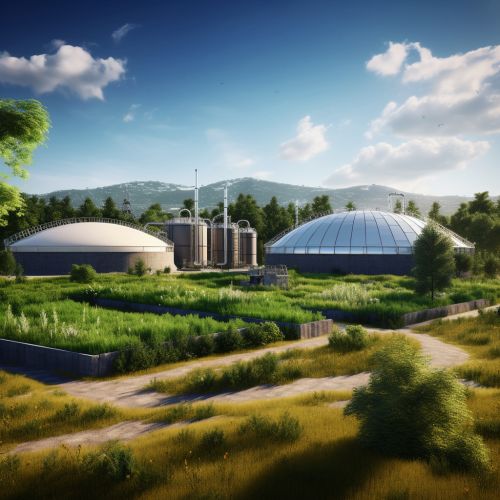The Role of Microbial Communities in Biogas Production
Introduction
Biogas production is a complex process that involves the breakdown of organic matter in the absence of oxygen, a process known as anaerobic digestion. This process is facilitated by a diverse community of microorganisms, each playing a crucial role in the different stages of biogas production. The microbial communities involved in biogas production include bacteria, archaea, and fungi, which work together to convert organic matter into biogas, a renewable source of energy.


Microbial Communities in Biogas Production
The microbial communities involved in biogas production are diverse and complex, with each group of microorganisms playing a specific role in the process. These communities are typically composed of bacteria, archaea, and fungi, which work together in a synergistic manner to convert organic matter into biogas.
Bacteria
Bacteria are the primary microorganisms involved in the initial stages of biogas production. They are responsible for the hydrolysis and acidogenesis stages of anaerobic digestion, where complex organic compounds are broken down into simpler compounds such as sugars, amino acids, and fatty acids. The bacteria involved in these stages include species from the genera Clostridium, Bacteroides, and Streptococcus.
Archaea
Archaea are responsible for the methanogenesis stage of anaerobic digestion, where the simple compounds produced by bacteria are converted into methane. The archaea involved in this process include species from the genera Methanobacterium, Methanosarcina, and Methanococcus.
Fungi
Fungi play a less prominent role in biogas production, but they are still important contributors to the process. They are primarily involved in the hydrolysis stage, where they help to break down complex organic compounds into simpler ones. The fungi involved in this process include species from the genera Aspergillus, Penicillium, and Trichoderma.
Factors Influencing Microbial Communities
Several factors can influence the composition and activity of microbial communities in biogas production. These factors include the type of substrate used, the temperature and pH of the digestion process, and the presence of inhibitory substances.
Substrate Type
The type of substrate used in biogas production can have a significant impact on the microbial communities involved in the process. Different substrates can favor the growth of different microorganisms, leading to variations in the composition and activity of the microbial communities.
Temperature and pH
The temperature and pH of the digestion process can also influence the microbial communities in biogas production. Most microorganisms involved in biogas production prefer a neutral to slightly alkaline pH and a mesophilic temperature range (around 30-40°C). However, some microorganisms can tolerate more extreme conditions, such as thermophilic temperatures (above 50°C) or acidic or alkaline pH levels.
Inhibitory Substances
Inhibitory substances, such as ammonia or hydrogen sulfide, can also affect the microbial communities in biogas production. High concentrations of these substances can inhibit the activity of certain microorganisms, potentially disrupting the biogas production process.
Role of Microbial Communities in Biogas Production
The microbial communities involved in biogas production play a crucial role in the process, with each group of microorganisms contributing to a different stage of the process. By working together in a synergistic manner, these microbial communities are able to convert organic matter into biogas, a renewable source of energy.
Hydrolysis
In the hydrolysis stage, bacteria and fungi break down complex organic compounds into simpler ones. This is a crucial first step in the biogas production process, as it prepares the substrate for the subsequent stages of digestion.
Acidogenesis
In the acidogenesis stage, bacteria convert the simple compounds produced during hydrolysis into volatile fatty acids and other intermediate compounds. These compounds are then used as substrates in the next stage of digestion.
Methanogenesis
In the methanogenesis stage, archaea convert the intermediate compounds produced during acidogenesis into methane. This is the final stage of the biogas production process, resulting in the production of biogas.
Conclusion
Microbial communities play a crucial role in biogas production, with each group of microorganisms contributing to a different stage of the process. By understanding the composition and activity of these communities, we can optimize the biogas production process and increase the yield of biogas, a renewable source of energy.
